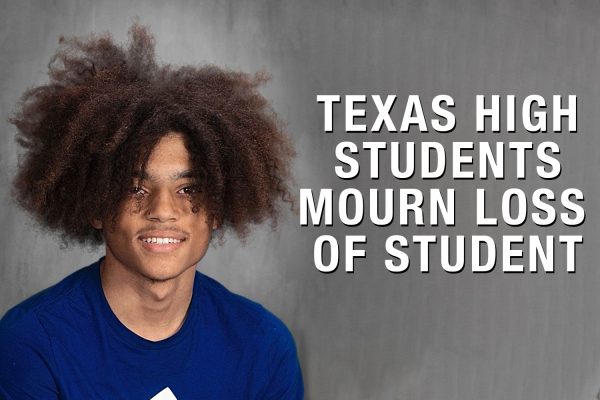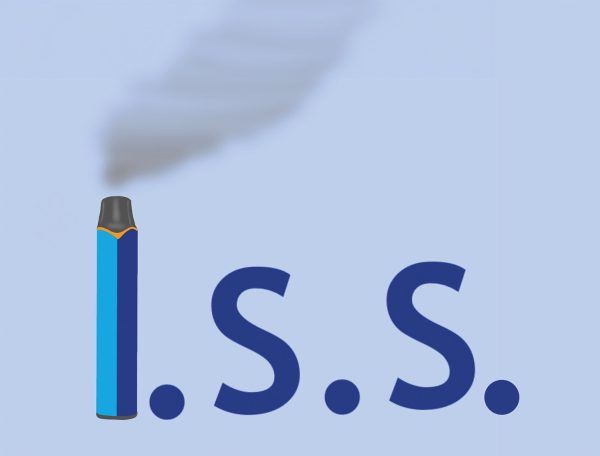Say my name
Policy prohibits use of preferred names, nicknames
The policy prohibiting the use of preferred names impacts transgender students.
December 20, 2017
A school policy that prohibits the use of preferred names specifically affects those who are transgender. According to the policy, the school must use students’ official names listed in TEAMS, the district’s data management system.
“We have to follow what’s in TEAMS,” principal Brad Bailey said. “I have asked our faculty and staff to not use nicknames and other names in order to be consistent.”
Texas Education Code 25.0021 requires that a student be identified by his or her legal surname, or last name, as that appears on the birth certificate or other legal document. However, the code does not address first names.
“To be consistent on everything, I sent out an email to all the staff on the first of the year to let [the staff] know that students have to be called by their regular name,” Bailey said. “We have to follow the policy because if they do call someone else [their preferred name], then it’s like an open door and you’ve gotta do it for everybody.”
However, Bailey said is was permissible to use a shortened version of a name, as long as it isn’t a nickname.
For transgender students, this policy creates an uncomfortable environment where they feel unaccepted. Sophomore Atlas Hines, a transgender student, said he has disassociated himself with his birth name.
“It doesn’t feel like they’re talking to me,” Hines said. “It’s kind of like biting down on a butter knife and then pulling it through your teeth.”
It doesn’t feel like they’re talking to me. It’s kind of like biting down on a butter knife and then pulling it through your teeth.
Consistency plays a significant role in the decisions regarding names; however, Hines’ main concern is not focused on a pattern but compromise.
“I know when I was living with my dad, school was the only time I got called by the name I associated with,” Hines said. “For some people, it’s really important and their only form of being able to deal with anything. If we can’t go by our preferred pronouns, then we have to have a middle ground.”
Transgender students, often desperate for some form of recognition from their educators, find the matter overlooked and thrown into a gray area.
“Gray areas exist because there’s no way to put people into a category that is this or that,” Hines said. “There are ways to do things that can appeal to everybody, and names don’t affect anyone but the person who you are calling them by.”
Using a student’s last name is an alternative option, Bailey said.
“If they don’t want to be called by their first name, then we can call them by their last name, but I think the thing is consistency. I think I was very clear with our teachers on how we need to approach our students,” Bailey said. “You want to respect everybody’s gender identities, but we have to keep in our guidelines and take our personal feelings out of that equation and go by the equation we should follow.”
According to Kali Cohn, staff attorney for the American Civil Liberties Union of Texas, there is legal support for the rights of transgender students to use preferred names.
“Title IX and FERPA both protect a student’s right to have their appropriate name and pronouns used in school,” Cohn said in an email. “Additionally, the American Psychological Association, National Association of School Psychologists, and National Association of Secondary School Principals all advise maintaining records consistent with a child’s gender identity.”
Title IX is a federal law that protects transgender students from discrimination, bullying and harassment. Under FERPA, the Family Educational Right and Privacy Act, students (or their parents) have a right to seek to amend school records if they are “inaccurate, misleading or in violation of the student’s right to privacy.”
Since issues that affect transgenders students in public school are relatively new, organizations released guidance documents that address situations that school districts will ultimately face. A document published in March by the Texas Association of School Boards states that transgender students are protected from discrimination.
According to TASB’s “Legal Issues Related to Transgender Students,” transgender students should be permitted to wear clothing that aligns with their gender identity, and school districts should use the preferred name and gender of the transgender student unless specifically prohibited by law.
Districts are legally required to have permanent academic achievement records, transcripts, that include a student’s legal name and gender.
Title IX and FERPA both protect a student’s right to have their appropriate name and pronouns used in school.
— Kali Cohn
However, the TASB document states, “In contract to permanent records, school districts often verbally address students by, and have non-permanent school records that reflect, preferred names or nicknames that are not a student’s legal first name. A school district should apply this practice equally with transgender students.”
Bailey said making sure everyone is treated equally and fairly is his top responsibility.
“I am for the students. I’ll do everything I can to make sure everyone is consistent in how we do that,” Bailey said. “I’ll look at what’s legally right and what we have as far as being consistent.”
Hines hopes that change will eventually come.
“Nothing will change if we aren’t doing anything about it,” Hines said. “I guess I can see from his side in the sense that if someone wanted to be called something outrageous, but I’m pretty sure you can play that by ear. Maybe that’s being unfair to ask, but even then, who is it hurting?” Hines said. “I know there are more people who are going to be upset by not being able to go by the only thing that makes them comfortable, than people who have to say a name that they think is weird to say.”
Bailey said policies would be reviewed annually.
“This is a big discussion topic right now, and we are going to evaluate annually to see how things change so that it’s consistent,” Bailey said. “There’s always something we can look at to see if it’s open to change. If there’s a way to do things that is going to make our students feel better, then there’s always an opportunity for that.” [email protected]





















